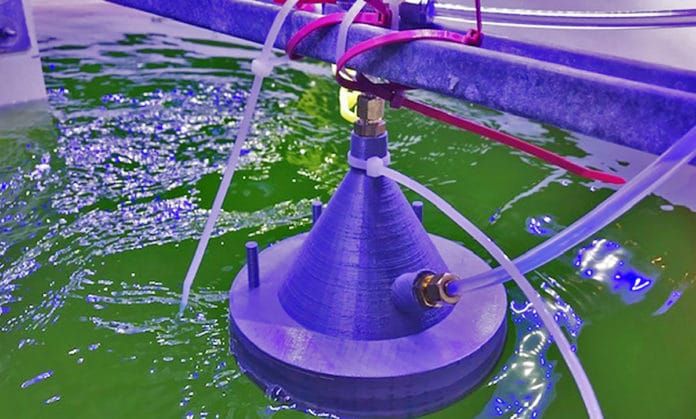From new biologically based fuels that power vehicles to renewable plastics based on biodegradable polymers that eliminate waste in the oceans and overloaded landfills, algae are considered a key to a future of sustainable products. However, the wide adoption of algae cultivation to produce environmentally sustainable biofuels and fine chemicals is currently hampered by large losses incurred by grazer infections.
“In order to have enough algae to supply all of these renewable materials – biofuels, bioplastics, and nutraceuticals – we need to find ways to increase algae production and yield,” said Robert Pomeroy of University of California San Diego’s Department of Chemistry and Biochemistry. “Keeping algae healthy is one way to do this. We can’t afford to lose acres of these crops.”
That’s why Robert Pomeroy from UC San Diego and his team have developed a technology for monitoring the health of algae crops, one of the world’s most promising sources for sustainable products.
The setup is designed for use in the long skinny “raceway” ponds that are broadly used for large-scale algae farming. Because these ponds are open to the natural environment, they’re subject to contamination by grazers, competitors, and infectious organisms such as viruses, bacteria, and fungi that can decimate algae crops in a matter of hours.
“Bacteria are built to attack and eat the algae, and their growth is exponential,” said Robert Pomeroy, the PNAS paper‘s senior author. “You could be fine one day with nice green algae, and the next day it’s a brown muddy mess. So this is not like losing 10 percent of your wheat crop – overnight, you could lose the entire algae crop.”
The UC San Diego team devised an automated way to perform real-time measurements of volatile gases using a technique known as chemical ionization mass spectrometry (CIMS), a method previously used in medicine, defense, and drug enforcement.
In this case, CIMS technology is used to continuously monitor the normal health of algae by tracking their volatile gas emissions through their growth and bloom cycle. When invading organisms or predators attack and induce stress, this results in a change to volatile gas signatures. Using CIMS, the researchers showed they could instantly detect the disruption and alerts algae farmers, allowing them to take action immediately.
In lab tests, the CIMS system detected grazing contaminations by infectious organisms 37 to 76 hours earlier than traditional monitoring methods that have been used for years, including microscopy and fluorescence. More research will be conducted to further develop CIMS for algae field applications.
